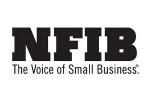WASHINGTON — After a couple of unpredictable years in business, many dry cleaners are pausing at the beginning of 2023 to make plans now that things — hopefully — are settling back into something approaching normal. To make the most of this approach, the National Federation of Independent Business (NFIB) recently hosted a webinar, “7 New Year’s Resolutions for Your Business,” to help owners get themselves and their business ready for 2023.
The webinar was hosted by Beth Milito, executive director of NFIB’s Small Business Legal Center, and Holly Wade, executive director of the NFIB Research Center.
In Part 1 of this series, we examined how making — or revising — a business plan can allow small-business owners to concentrate their efforts on what really matters for their company. In Part 2, we looked at how to keep marketing efforts from falling by the wayside, and why some customers might be costing your business more than they bring in. We continue today by focusing on the most valuable assets a drycleaning business has — its employees.
Assess and Improve Employee Retention
One of the surprises for many coming out of the pandemic, as business started to return, was the lack of people available in the workforce to meet this increased demand. Suddenly, retaining employees was more vital than ever for business owners.
One way to accomplish this, Milito says, is for owners to make sure employees feel seen and heard, and that the workplace atmosphere is welcoming.
“Employee engagement is just so important, particularly in this tight labor market,” she says. “If you have a good employee, you want to do all you can to keep them.”
There are two ways that a business loses employees, Milito says: functional turnover and dysfunctional turnover. Functional turnover occurs when there’s a good reason the employee leaves — a spouse moves and the family relocates, the employee retires or other life event.
“Dysfunctional turnover is when you lose a good employee for what I’ll say is an unfortunate reason,” Milito says. “There is strife in the workplace, and even more so where they go to work for a competitor.”
Losing a good employee comes with a cost. “The average cost of turnover is 11% of an employee’s salary,” Milito says, “because of the drop in customer service that can occur, and the time it takes to find and then onboard and train a new employee.” Employee morale and productivity can also take a hit.
With this in mind, owners should prioritize employee engagement, Milito believes, even if though it can be time consuming.
“It really is worth the investment in your employees,” she says, “There’s another frightening statistic for employers: In a recent poll, 45% of workers said they would jump ship for a new job even though they’re happy in their current position. You can’t stop employees from leaving unless you have a plan to make them stay.”
There are several steps employers can take, Milito says, that can build this retention plan.
- Have a thoughtful onboarding process — “What policies and procedures do you have to make employees feel welcome on Day 1?” she asks. “Is there someone there the new employee can shadow as they learn the ropes? If they have questions, will they get answers? One pro tip — don’t let new employees eat lunch alone on their first day. Make them feel welcome from the beginning. Also, offer formal 30- and 60-day touchpoint meetings to see how they are doing.”
- Implement competitive pay and perks — “Another pro tip: 35% of employees will look for a new job if they don’t receive a raise in the first 12 months,” Milito says. “I know it’s tight in some industries, and there’s not a lot of money to throw around for raises. But a small gesture can go a long way toward retaining employees.” Other incentives, such as bonuses or revenue sharing, can also help employees feel valued.
- Promotions — “Promoting from within shows your employees that there are advancement opportunities at the company,” Milito says. “Develop a career pyramid, and take time to think about how to reward high performers. Is there additional training you can send them to receive? That’s something that really shows investment in your employees.
- Feedback and communication — Milito advises owners to ensure that their employees are feeling heard, because this increases their sense of purpose with the company. This includes keeping them in the loop of general short- and long-term business goals and discussing with them how they can play a part in hitting these goals.
Come back Thursday for the conclusion of this series, when we’ll explore risk and growth, tax planning and putting plans in motion. For Part 1 of this series, click HERE. For Part 2, click HERE.
Have a question or comment? E-mail our editor Dave Davis at [email protected].





































































































